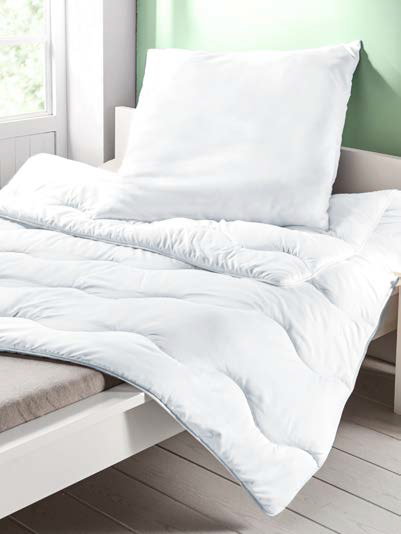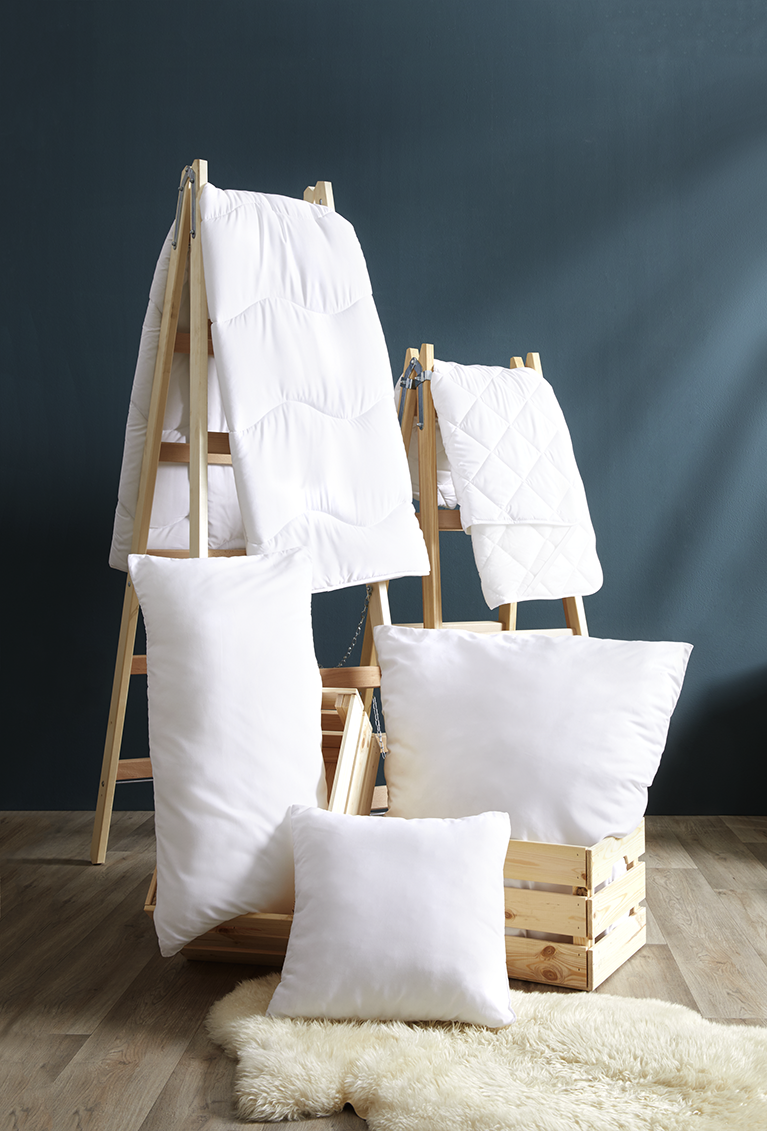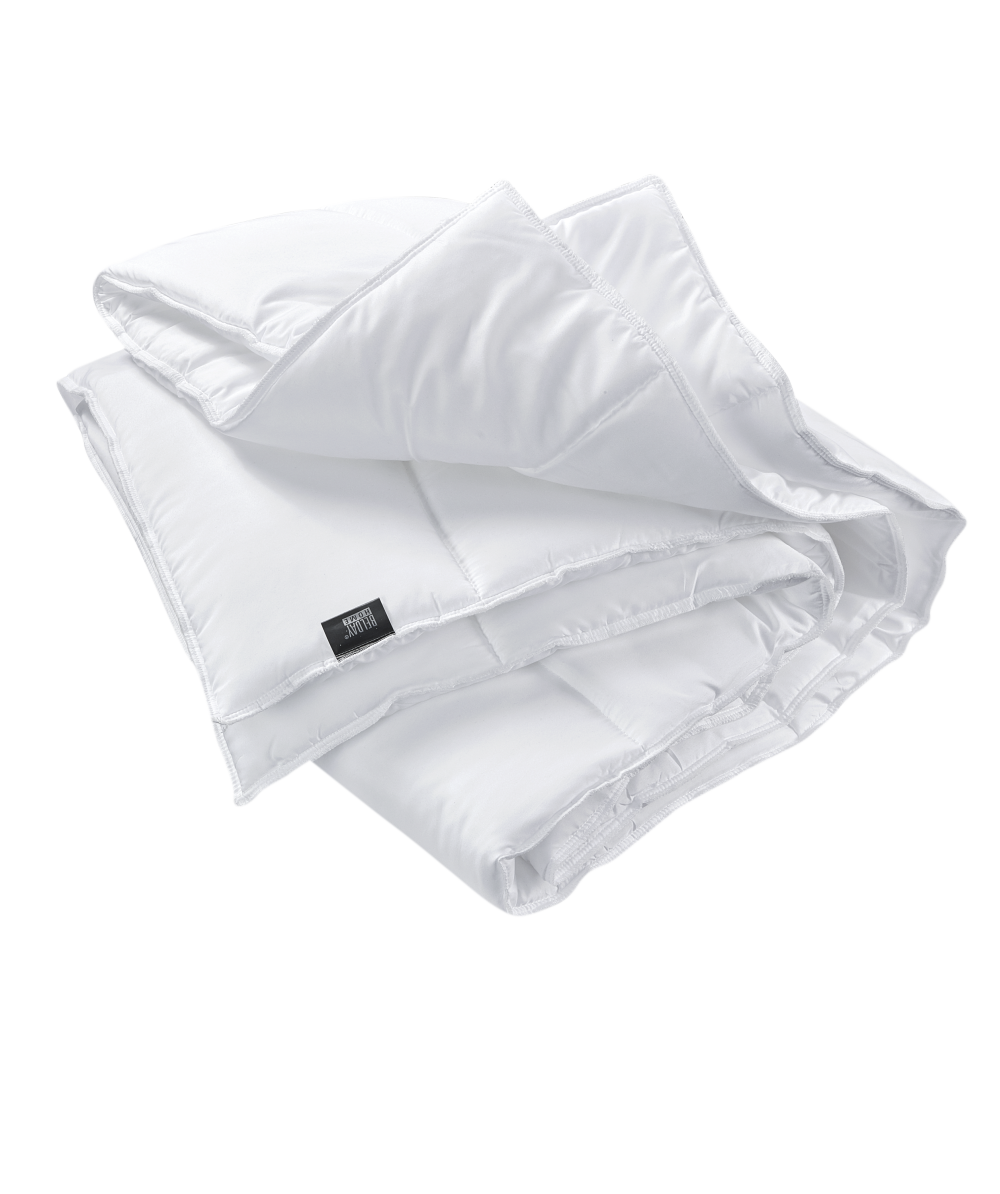
Down quilt
- 135 x 200 cm
- Cotton pillowcase
- Down filling
When looking for a new blanket, it is important to decide whether to opt for natural or synthetic fibers. But which materials and fillings are best for you? Learn here which blanket you should go for.
Often at night it becomes clear how differently people perceive temperature: While some may shiver and freeze, others have an internal oven that lets them sleep in comfortable warmth – even in winter with the window open! Everyone should have a blanket that suits their body temperature. Of course, this is easier said than done, because anyone buying a new blanket will quickly find themselves overwhelmed. There is a great range of fillings to choose from, and then there are the various stitching options...
But we are here to help you!
The three most common blanket fillings are synthetic fibers, down and natural hair. In Germany, synthetically produced materials such as microfiber (hollow polyester fibers) are most popular. There are many good reasons: Synthetic blankets are usually less expensive than their natural counterparts. They are cozy, light and machine-washable even at high temperatures.
They can then easily be air-dried. This makes them a great choice, especially for allergy sufferers who take reactions to house dust mites and need to wash their blanket frequently.
However, the synthetic filling does have a few disadvantages: For example - as mentioned at the beginning - if you get cold quickly in winter, it is better to choose one of the other variants.
This is because synthetic fiber comforters are not only less effective at wicking away moisture such as sweat, but also allow heat to escape more easily than a down inlet, for example.
When you’re considering which type of blanket to buy, you’ll soon stumble upon down filling. Goose or duck feathers boast thermal efficiency much better than synthetic fillings. The soft feathers provide better insulation while staying drier, as they are better at wicking moisture. This is important when considering the fact that all of us sweat at night, losing up to a liter of water in the process. Tests have shown the down wicks up to 15 times more moisture than polyester.
On top of this natural down offers particularly good insulation: inside the blanket, around two million tiny knots hang from the shafts of the fluffy feathers, interlocking like a fan to trap body heat incredibly effectively. To ensure that the moisture absorbed during the night doesn’t get stuck in the blanket, always shake it and air it out thoroughly in the morning.
They are much more difficult to clean than synthetic blankets. They require a large washing machine and a dryer, at the very least. Even though, there’s no guarantee that a down blanket will come out of the wash undamaged: The feathers often clump together during washing and can no longer be evenly distributed inside the blanket, causing a loss of thermal efficiency and comfort.
What else can you do? Either fork out the high price for dry cleaning or have the filling reinserted at a specialist store after washing – both expensive options.
There are actually some materials that offer the same thermal efficiency while absorbing and wicking moisture even more effectively than down: animal hair, such as cashmere or camel hair. They are particularly suitable for people who sweat a lot during their sleep. Disadvantage: Natural hair fillings are much heavier than down and less fluffy and cozy.
Cotton, silk and wild silk blankets offer similar benefits for those of us who burn a little hotter. However, they’re nowhere near as warm as cashmere or camel hair, so they’re ideal for summer when your bedroom is relatively warm anyway.
When considering which blanket to buy you shouldn’t just consider what’s on the inside. The first thing that will catch your eye is the stitching. This exists for two reasons: it holds the filling in place and improves heat insulation. The seams of winter blankets for example are usually attached to the sides of the blanket on the inside and stitched into equal-sized squares that hold the loose filling in place (baffle box blanket). Depending the desired thermal efficiency, the height of the sidewalls varies between 2 and 15 cm. The thickness of the seamm is intended to prevent cold zones from developing at the seams due to a lack of filling.
Blankets with a loose filling such as down have a different type of stitching than those with an incorporated fleece, such as animal hair, silk or synthetic fibers. The only type of blanket without stitching is the loose down blanket. Compared to modern flat quilts, these puffy blankets are becoming less and less popular.
When buying a blanket, you should ensure that your entire body fits comfortably beneath it. People up to 180 cm tall are usually well served with a standard single blanket (135 x 200 cm), while taller people shouldconsider buying a comfort size blanket (155 x 220cm). If both partners tend to sleep more peacefully and have very similar warmth requirements, a double blanket (200 x 200 cm) is another option. As a general rule: any type of blanket should be replaced about every five years.

Down quilt
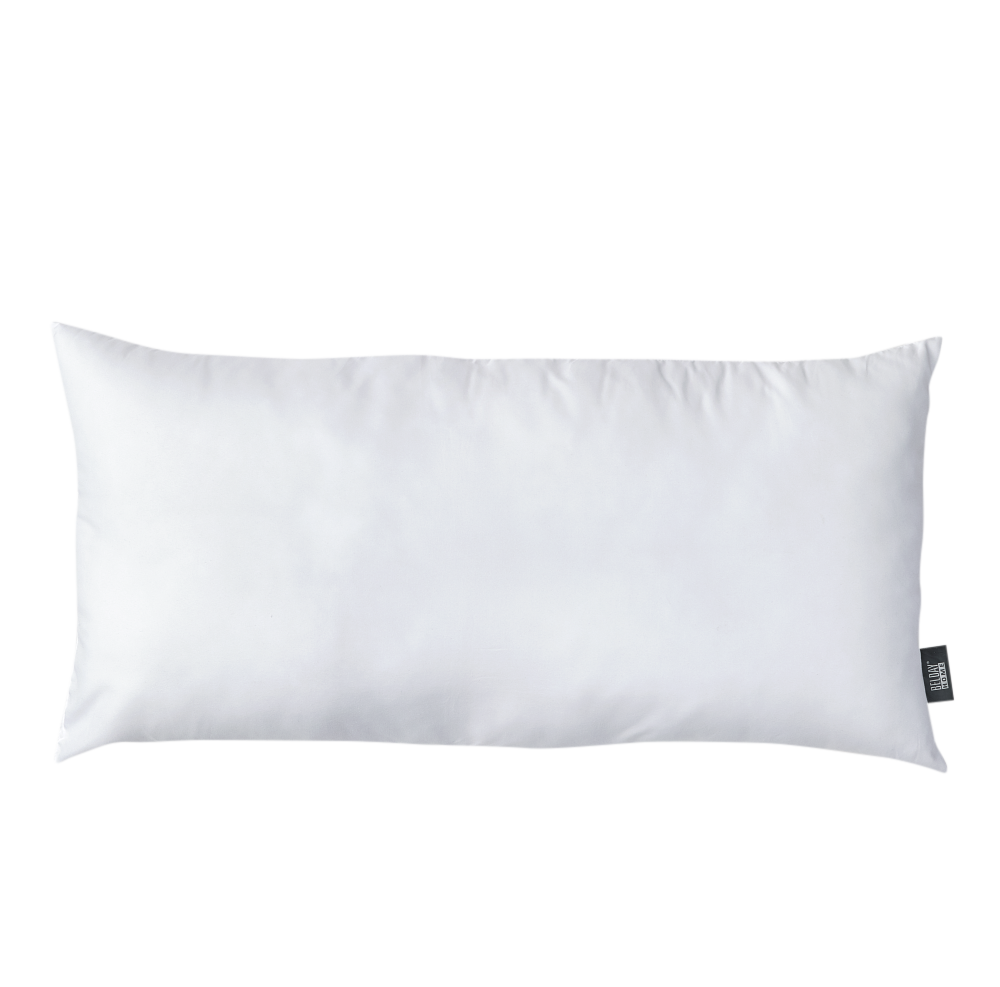
Down pillow
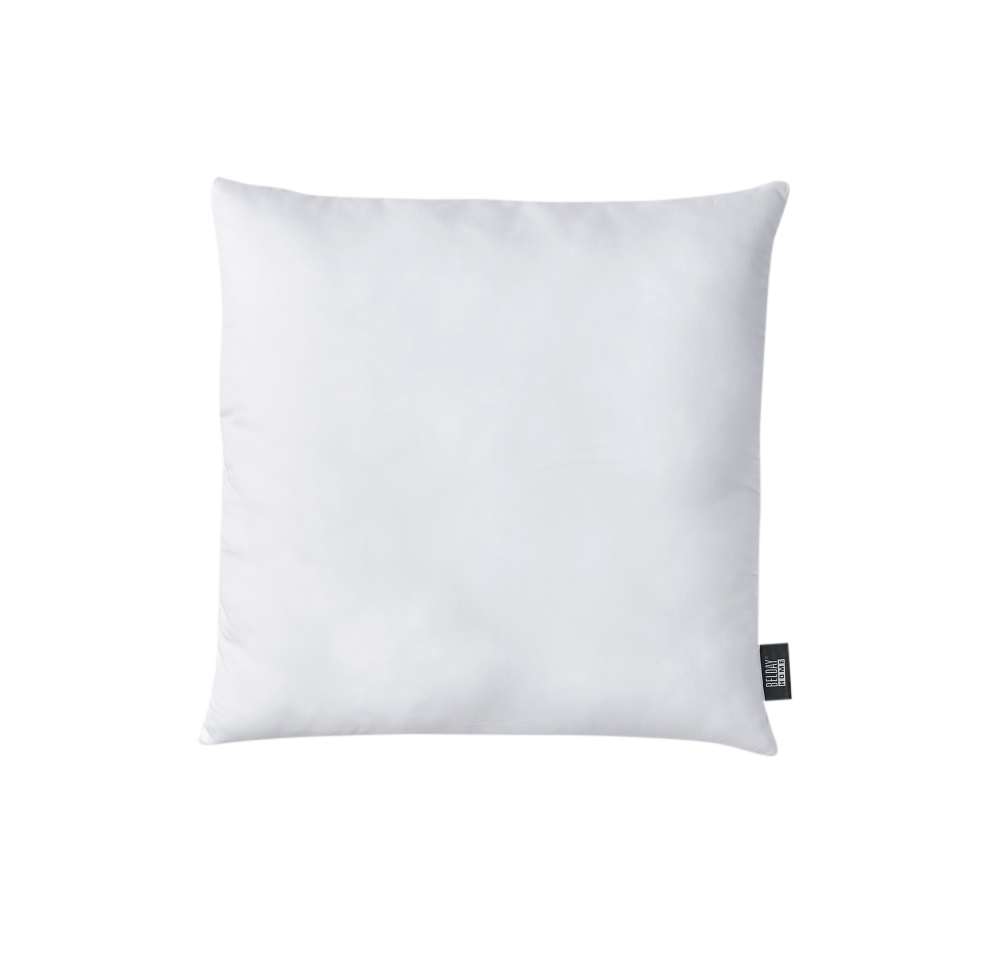
Down pillow
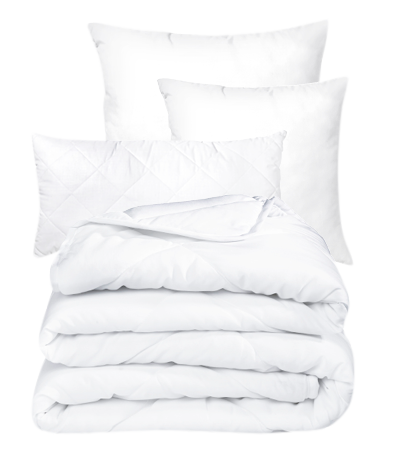
Microfiber bedding

You'll always find the perfect items in our store!
Visit us today and find out what the store near you has in stock for you!
We look forward to seeing you!

